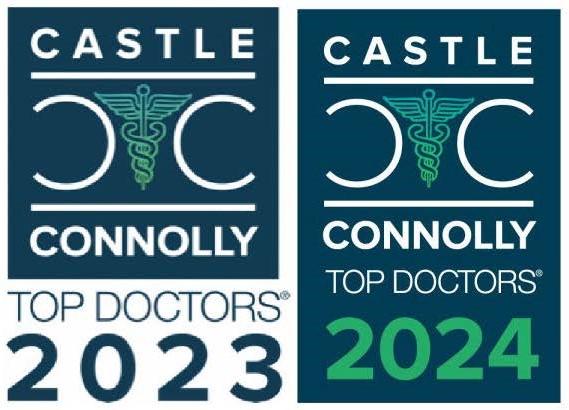
rTMS Treatment More Effective Than Antidepressants for Resistant Depression, Study Finds
Finding the right depression treatment can be frustrating. Antidepressants often don’t provide the relief many hope for, especially when multiple types have already been tried. This is what’s known as treatment-resistant depression (TRD). It’s more common than you might think.
However, a recent study offers a silver lining: Repetitive Transcranial Magnetic Stimulation (rTMS) might be a more effective solution than trying another medication. If you or someone you know is still searching for relief, exploring this option could change everything. This breakthrough offers a new path to consider.
Why Seek Alternatives to Antidepressants for Depression?
For many diagnosed with depression, antidepressants are usually the go-to treatment. They work by adjusting brain chemicals like serotonin to help ease symptoms. However, they don’t work the same for everyone.
In fact, approximately 30% of people with depression don’t find sufficient relief from their first antidepressant. This is often referred to as treatment-resistant depression (TRD).
There are a few reasons why seeking alternatives might be necessary:
- Ineffectiveness: Many people try multiple medications before finding one that works. Even then, full remission is rare. A study found that only about one-third of people achieved complete remission after their first antidepressant trial. For many, finding the right medication can be a long and challenging journey. This ongoing search can leave individuals feeling both exhausted and disheartened.
- Side Effects: Antidepressants often come with side effects like nausea, weight gain, sexual dysfunction, and insomnia. For some, these side effects can be so difficult that continuing the medication feels impossible. The challenge is compounded when switching to a different antidepressant introduces a new set of unwanted side effects. It can feel like an endless cycle, leaving individuals frustrated.
- Delayed Relief: Antidepressants often take weeks to start showing effects. During this period, symptoms can stay intense, affecting daily life and well-being. Some individuals might not notice improvement even after months. A frustrating cycle of switching to different medications can begin.
- Desire for Non-Pharmacological Options: Many people prefer to avoid medication due to concerns about long-term effects, dependency, or interactions with other drugs. This often leads them to explore other options. Natural remedies, lifestyle changes, and non-invasive therapies like repetitive Transcranial Magnetic Stimulation (rTMS) become appealing alternatives. Such treatments offer a more holistic approach to well-being.
- Stigma: Despite growing awareness, there’s still a stigma associated with taking psychiatric medications. This can deter some people from seeking help or adhering to their prescribed treatment. The idea of non-medication therapies can seem less stigmatizing for some.
Why Is Treatment-Resistant Depression So Challenging to Treat?
Treatment-resistant depression (TRD) presents difficulty for both patients and healthcare providers. A need for a different approach is needed whenever two or more different antidepressants fail. But what makes TRD so difficult to manage?
- Biological Variability: Depression is not just one disorder. It’s a collection of symptoms that may arise from different underlying biological mechanisms. For some, depression is linked to serotonin imbalance. And for others, different neurotransmitters like dopamine or norepinephrine might be involved. This makes it hard to predict which treatment will work. A treatment that adjusts serotonin levels might not help someone whose depression involves different neural pathways.
- Chronic and Severe Symptoms: TRD often comes with more intense and chronic symptoms. Individuals with TRD may experience persistent sadness, fatigue, cognitive impairments, and physical symptoms.
- Comorbid Conditions: Many with TRD also have other conditions — anxiety, substance use disorders, chronic pain, or medical conditions. Comorbidities like these complicate the treatment process. For example, certain antidepressants can worsen anxiety. Some can interact poorly with medications for other conditions.
- Treatment Cycle: The constant change can be disheartening. It also leads to a risk of “treatment fatigue”. Patients grow weary of trying new therapies and lose hope for recovery.
- Neurobiological Factors: Some individuals with TRD show alterations in brain structure and function, such as reduced activity in the prefrontal cortex. This part of the brain is needed in mood regulation. Traditional antidepressants may not effectively target these structural changes. This makes alternative treatments like rTMS more relevant.
- Limited Personalized Treatment: What works for one person might not work for another. In cases of TRD, finding the right treatment often requires trying multiple medications, adjustments, and therapy sessions. Without personalized solutions, many feel stuck and uncertain.
What Did the Study Find About rTMS vs. Antidepressants?
A recent multicenter randomized controlled trial sought to compare the effectiveness of repetitive Transcranial Magnetic Stimulation (rTMS) to a switch in antidepressant medication for individuals with treatment-resistant depression (TRD).
The Study Setup
The researchers studied 89 patients with unipolar nonpsychotic depression. Each patient had previously not responded adequately to at least two treatment trials. These individuals were then split into two groups. One received rTMS, and the other underwent a switch in antidepressant medication. Both groups also participated in psychotherapy. The study ran for an 8-week period, where:
- The rTMS group received 25 high-frequency sessions targeting the left dorsolateral prefrontal cortex — a brain area linked to mood regulation.
- The medication group had their antidepressants adjusted according to the Dutch treatment algorithm.
Researcher aims to evaluate changes in the severity of depressive symptoms using the Hamilton Depression Rating Scale (HAM-D). Secondary aims included observing response rates (a significant reduction in symptoms), remission rates (near-complete absence of depressive symptoms), and changes in other symptom dimensions like anhedonia (loss of pleasure), anxiety, sleep, rumination, and cognitive reactivity.
rTMS vs. Antidepressant Switch: The Findings
Larger Reduction in Depressive Symptoms
The study’s results were quite telling. rTMS led to a significantly larger reduction in depressive symptoms compared to the medication switch group.
- Response Rates: 37.5% of patients undergoing rTMS experienced a significant reduction in depressive symptoms, as opposed to only 14.6% in the medication group.
- Remission Rates: For full remission, 27.1% of rTMS patients saw complete symptom relief compared to just 4.9% in those who switched medications.
In simpler terms, those who underwent rTMS had more than double the likelihood of responding to treatment. They were also over five times more likely to achieve remission than those who only switched their medication.
Symptom Improvements Beyond Depression
The study also investigated how rTMS impacted other symptoms related to depression. The findings revealed that:
- Anxiety and anhedonia showed greater improvement in the rTMS group compared to those who switched antidepressants. Anxiety often accompanies depression, making its reduction a significant finding. Additionally, improvements in anhedonia can greatly enhance quality of life.
- However, there were no significant differences between the two groups in terms of reductions in rumination, cognitive reactivity, or sleep disturbances. This suggests that while rTMS effectively targets some symptoms, others may require different or additional interventions.
Expectations and Treatment Outcomes
The study also examined how treatment expectations related to changes in HAM-D scores. It found that positive expectations were linked to larger reductions in depression severity. This indicates that a person’s beliefs and attitudes may impact the success of rTMS and medication changes.
How Do These Findings Impact the Treatment of Depression?
The findings of this study emphasize a key point: rTMS is an effective alternative to medication for those with treatment-resistant depression. This is especially necessary when traditional medications fail to produce desired results or cause unwanted side effects.
rTMS provides a promising option for those who don’t respond to multiple medication trials. It’s also known for effectively reducing anxiety and anhedonia. This makes it particularly helpful for individuals whose depression includes these symptoms.
Study Limitations and Future Directions
As with all studies, there are some limitations to consider:
- The sample size was relatively small (N=89), which, while providing meaningful insights, suggests the need for larger studies to confirm these findings.
- The study’s duration was limited to 8 weeks. Long-term outcomes and benefits of rTMS compared to medication switches need further exploration.
- The results focused on unipolar nonpsychotic depression, so how these findings apply to other forms of depression (e.g., bipolar, psychotic depression) remains unclear.
Future research could expand on these areas and explore the combined use of rTMS with other therapies to enhance treatment outcomes further.
What Should Patients Expect When Undergoing rTMS?
When undergoing repetitive Transcranial Magnetic Stimulation (rTMS), patients can expect a non-invasive, outpatient procedure. Each session lasts around 30-40 minutes. During treatment, a magnetic coil is placed gently on the patient’s head, targeting the left dorsolateral prefrontal cortex. This coil delivers magnetic pulses to stimulate brain activity. They will feel light tapping or tingling. Generally, rTMS is well-tolerated. Only mild side effects, such as headache or scalp discomfort that, usually resolve quickly.
Patients typically undergo 25-30 sessions, spread over 4-6 weeks. Because rTMS requires no anesthesia, there’s no downtime — patients can drive themselves home and immediately resume daily activities. For many, noticeable improvements in mood and depression symptoms can start within the first few weeks. Though some may take longer.
How Does the TMS Institute of Arizona Help Those With Treatment-Resistant Depression?
TMS Institute of Arizona delivers the best care to those struggling with treatment-resistant depression using the most advanced rTMS technology. We execute thorough assessments to understand each patient’s symptoms and history. Our skilled team will help you find relief, support, and guidance throughout your treatment journey.
rTMS could be the solution you are looking for. Schedule a consultation with us. Our expertise, compassion, and state-of-the-art treatment can help you regain your well-being and improve your quality of life.
References
Dalhuisen, I., Iris van Oostrom, Spijker, J., Wijnen, B., Eric van Exel, Hans van Mierlo, Dieuwertje de Waardt, Arns, M., Tendolkar, I., & Philip van Eijndhoven. (2024). rTMS as a Next Step in Antidepressant Nonresponders: A Randomized Comparison With Current Antidepressant Treatment Approaches. American Journal of Psychiatry. https://doi.org/10.1176/appi.ajp.20230556
Mohamed, S., Johnson, G. R., Chen, P., Hicks, P. B., Davis, L. L., Yoon, J., Gleason, T. C., Vertrees, J. E., Weingart, K., Tal, I., Scrymgeour, A., Lawrence, D. D., Planeta, B., Thase, M. E., Huang, G. D., Zisook, S., Rao, S. D., Pilkinton, P. D., Wilcox, J. A., & Iranmanesh, A. (2017). Effect of Antidepressant Switching vs Augmentation on Remission Among Patients With Major Depressive Disorder Unresponsive to Antidepressant Treatment. JAMA, 318(2), 132–132. https://doi.org/10.1001/jama.2017.8036
None Al-harbi. (2012). Treatment-resistant depression: therapeutic trends, challenges, and future directions. Patient Preference and Adherence, 369–369. https://doi.org/10.2147/ppa.s29716
Disclaimer: The study findings discussed in this article are for informational purposes only and do not substitute for professional medical advice. Always consult with a healthcare provider for medical guidance.













